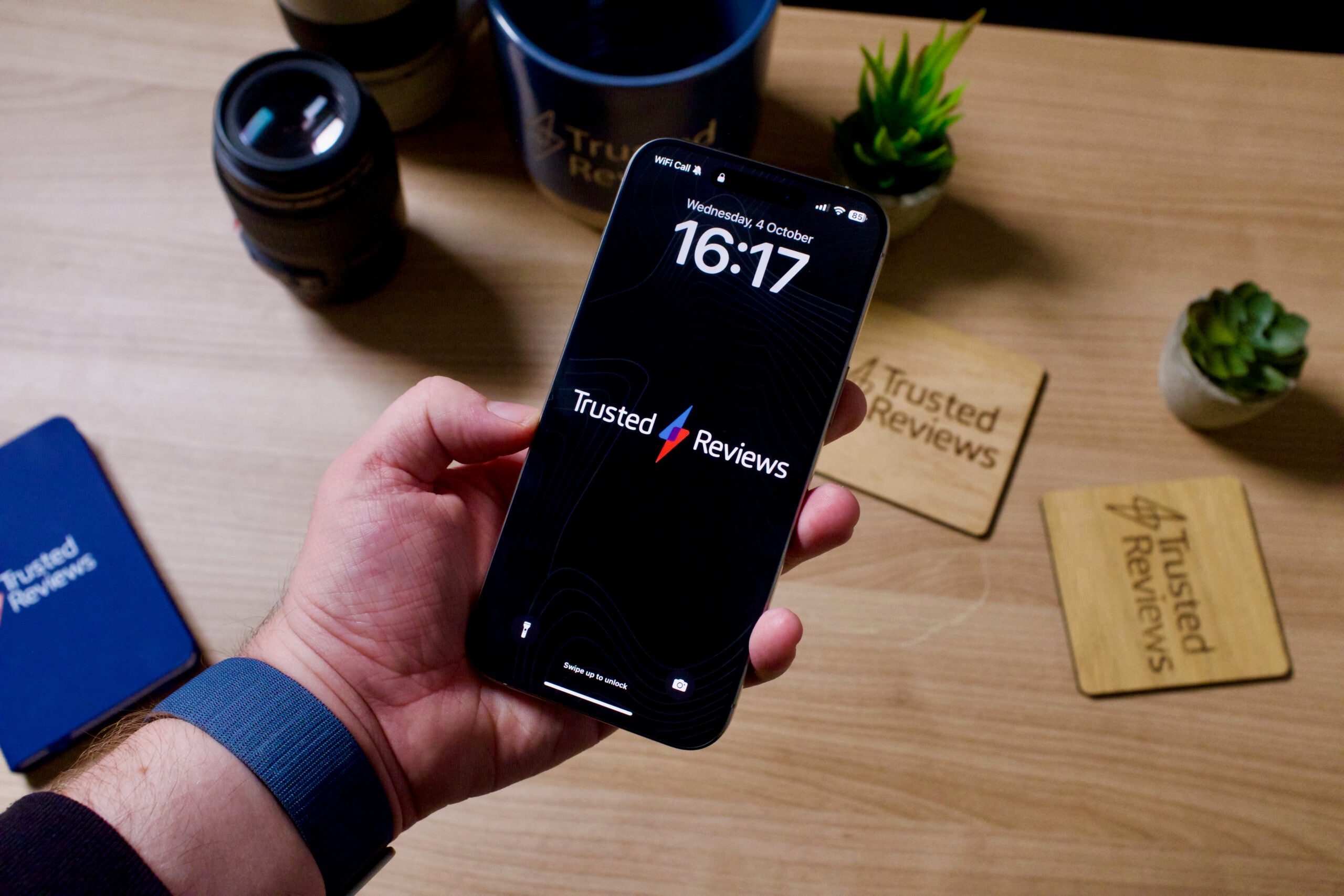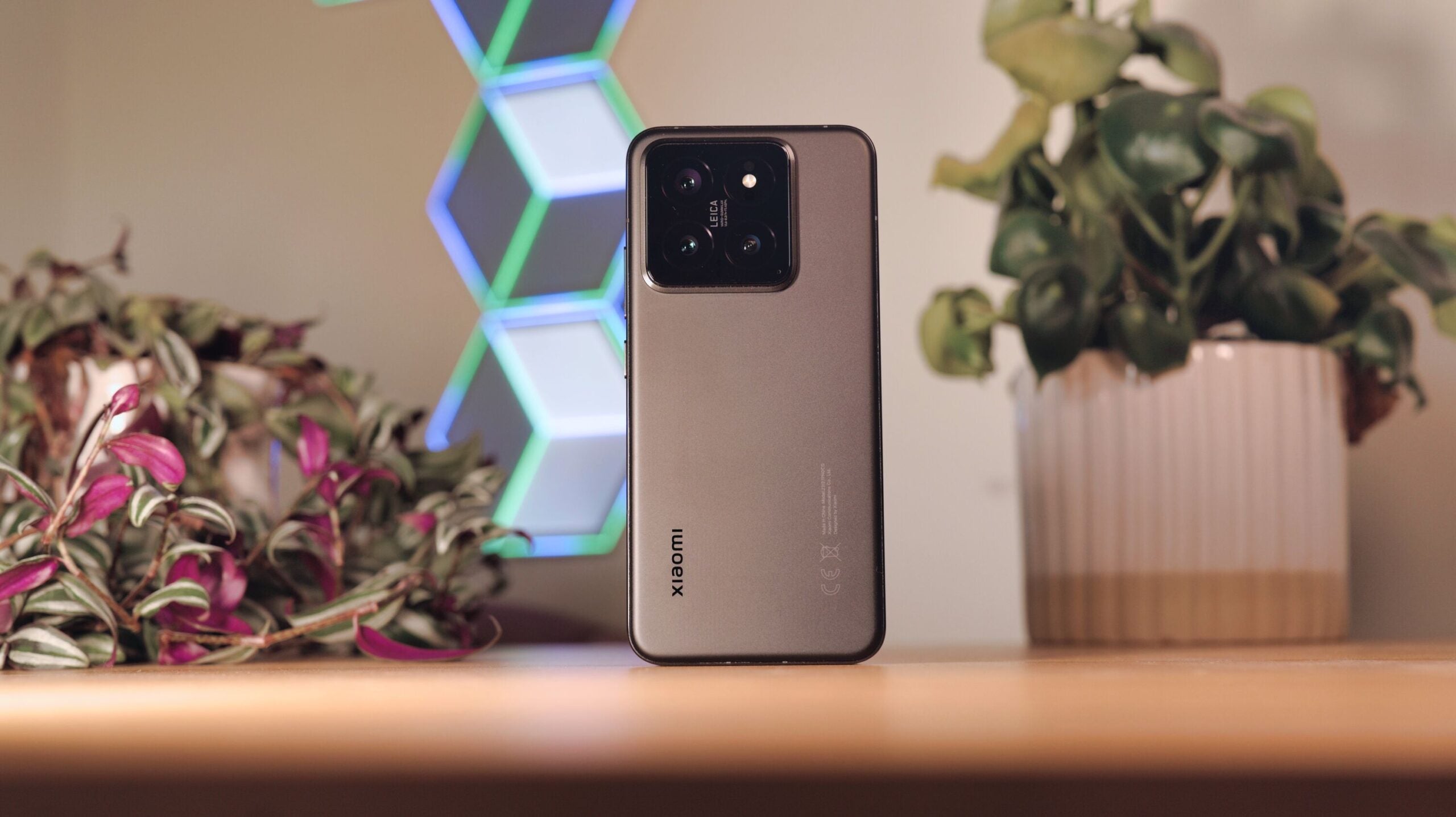ZTE Axon 30 Review
All about the screen
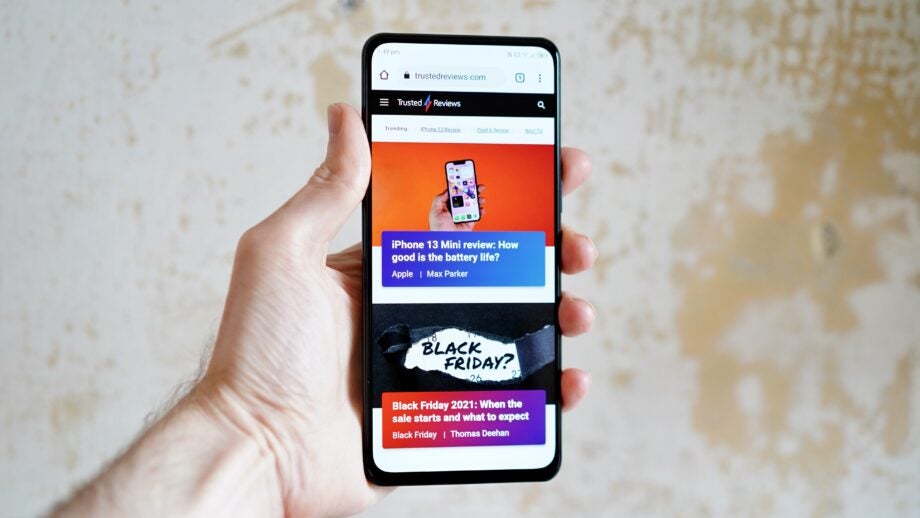
Verdict
The ZTE Axon 30 5G is a fairly ordinary mid-range smartphone with one stand out feature: a large, fluid, and notchless OLED display. As a package, it’s not as compelling as the OnePlus Nord 2, and the Poco F3 provides superior value, but it’s a solid pick for those who watch a lot of video on the go.
Pros
- Huge, vibrant display
- Brilliantly well-hidden selfie camera
- Strong performance
Cons
- Drab design
- Mediocre cameras
- Underwhelming battery life
Availability
- UKRRP: £429
- USARRP: $500
- EuropeRRP: €500
Key Features
- Rear camera64MP wide, 8MP ultrawide, 5MP macro, 2MP depth
- No notchUnder-screen allows for a huge display with no distractions
- ChipsetPowered by the Snapdragon 870
Introduction
Apple made a fairly big deal out of the fact that the iPhone 13 notch had been reduced in size by 20%. That’s about as close to an admission that notches are undesirable as we’re likely to get from the company that kicked the whole trend off.
ZTE makes Apple look rather silly with the Axon 30 5G. It removes the notch from the equation altogether with arguably the best under-display selfie camera implementation we’ve seen yet. What’s more, it does so in a package that starts from just £429.
The ZTE Axon 30 5G is far from flawless, and it’s definitely not the best mid-range phone to arrive this year. But it is a unique addition to the roster and a solid all-rounder. Notch-haters and media fiends, in particular, will want to take note.
Design and Screen
- Drab plastic design
- Large body
- Huge, vibrant display
The ZTE Axon 30 5G has a fairly unremarkable design in most respects. It’s got a large 170.2 x 77.8mm footprint, for reasons that will become apparent, but it’s fairly thin at 7.8mm, and it weighs a just-so 189g.
From the rear, there’s little to make it stand out from the mid-range crowd. Its camera module is fairly typical, and not especially prominent, though the shiny circular surrounds do at least look a little different from the usual rectangular approach.
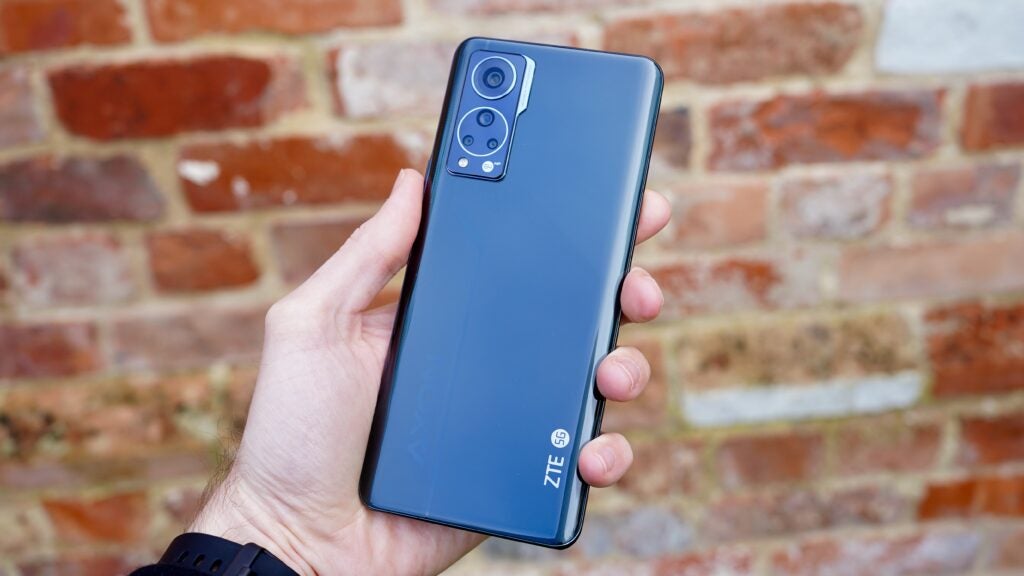
Otherwise, the shiny plastic material used for the rear panel is typical cheaper phone fare. It’s smudgy, bland, and not especially pleasing to handle.
The real design fireworks here relate to the front of the phone. ZTE has fitted the Axon 30 5G with an under-display selfie camera, which means that the entire front of the phone is given over to the screen.
It’s arguably the best attempt at such a technology that we’ve yet seen. It’s certainly a lot better than the equivalent attempt made in the Samsung Galaxy Z Fold 3. You really wouldn’t know that there’s a camera sensor back there if you weren’t looking for it, and even then it’s tough to spot.
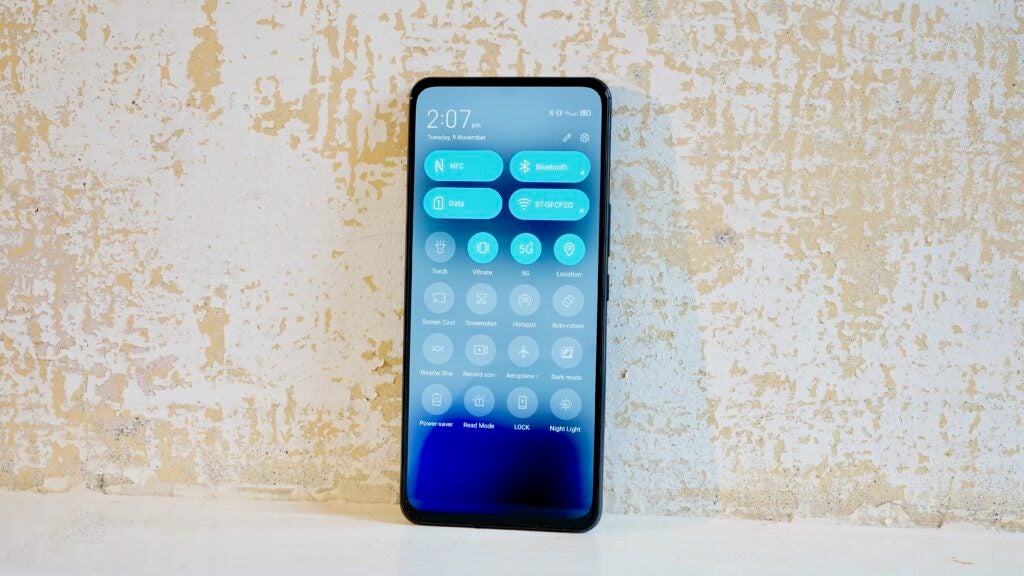
This is a rather strange inclusion from ZTE. As we’ve already mentioned, the ZTE Axon 30 5G is not a premium phone. It’s about a quarter of the price of that aforementioned Galaxy Z Fold 3.
What’s even odder is that ZTE didn’t incorporate this feature into the more premium ZTE Axon 30 Ultra.
Whatever the thought process, ZTE has really made good use of that notchless design. The ZTE Axon 30 5G’s display is a huge 6.92-inch FHD+ AMOLED with a 120Hz maximum refresh rate. I recorded a non-auto maximum brightness of 445nits, which is pretty decent for a mid-range phone.
The phone’s colour accuracy is strong too. Using a colorimeter I recorded gamut coverage of 99.1% sRGB, 82.2% Adobe RGB, and 96.4% DCI P3.
The only real disappointment here, given how brilliant this display is for media playback, is a poor audio showing. There are no stereo speakers, and there’s no 3.5mm headphone jack either.
Camera
- Mediocre 64MP wide sensor
- Sub-standard ultra-wide and pointless back-ups
- Selfie camera well-hidden but poor
ZTE hasn’t exactly gone all out with the Axon 30 5G’s camera system. It’s a competent effort, but it’s far from the best, even within the £400 smartphone category. I certainly wouldn’t put it up there with the OnePlus Nord 2, for example.
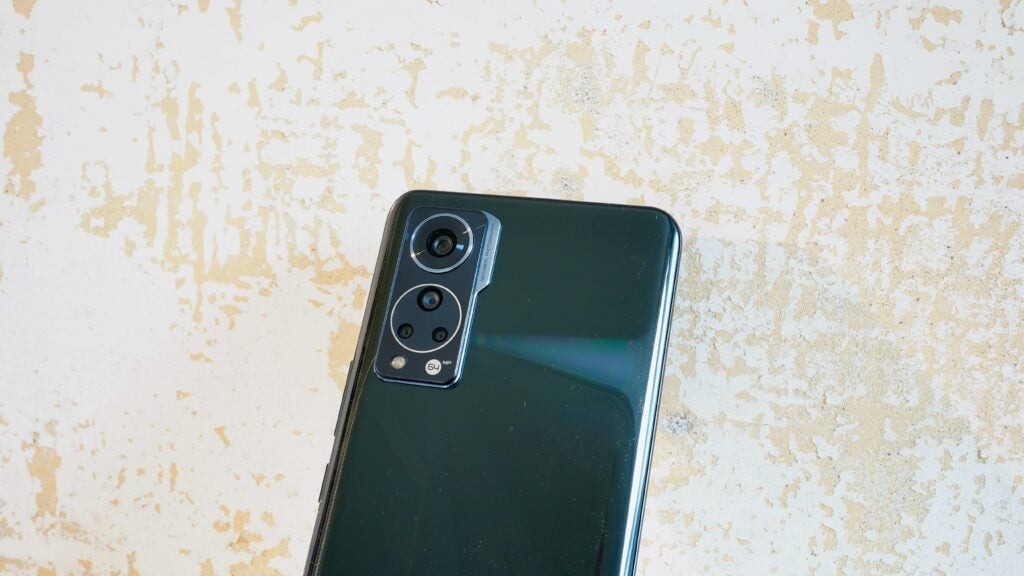
Most of your shooting will be done with the 64MP 1/1.73″ wide sensor, which is accompanied by an f/1.8 aperture. There’s no OIS, unlike the aforementioned Nord 2, which takes its toll in lower lighting conditions, where quick casual snapshots can tend to yield a little blur.
Even in strong lighting, some of the shots I took yielded a weirdly overprocessed, overexposed look. This would seem to be an issue with ZTE’s AI scene selection more than anything else. It’s simply a little inconsistent in the choices it makes.



Backing this sensor up is a modest 8MP ultra-wide, which completely fails to match up to the wide sensor on detail or colour tone, and often overexposes areas that the main camera does not.
Meanwhile, the lack of a dedicated telephoto sensor introduces noticeable noise to any zoom attempts. ZTE has done the usual thing of fitting the Axon 30 5G out with a 5MP macro sensor and a 2MP depth sensor, neither of which are much use in day to day shooting.
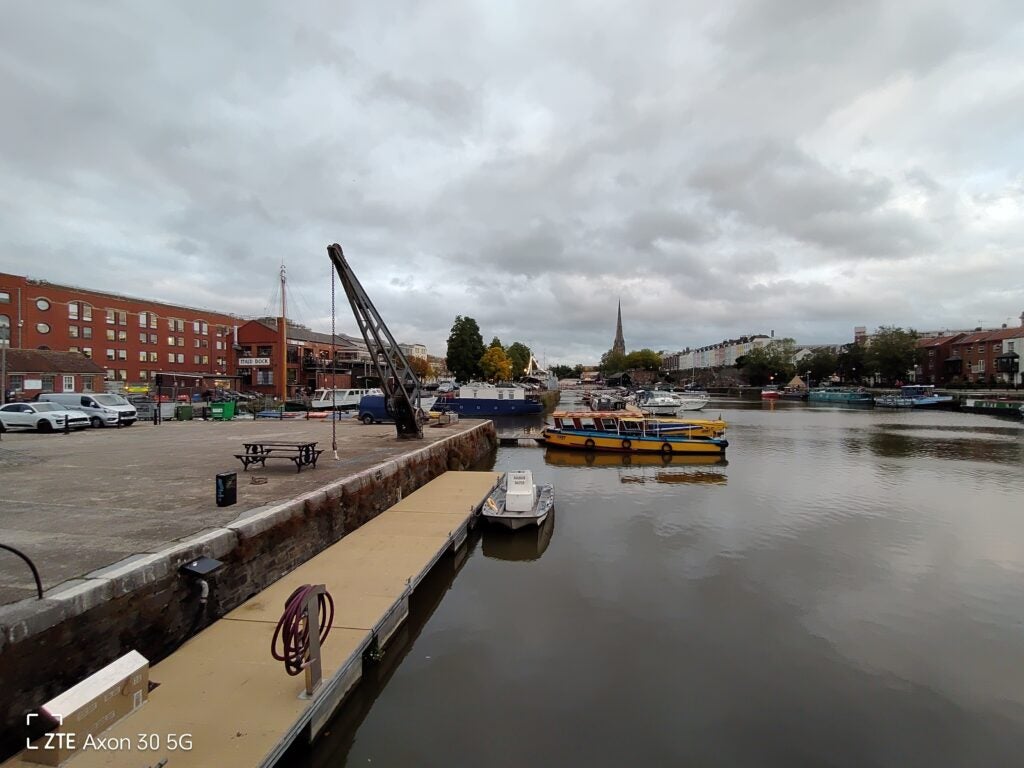

As for that hidden 16MP selfie camera, well, let’s just say it’s good that it does such a good job of staying hidden. As a selfie camera, it’s sorely lacking, producing soft and hazy shots that fall short in every department. The selfie portrait mode is one of the worst I’ve seen of late, with a deeply fake bokeh effect and all manner of weird artefacts around the edge of the subject.


Performance
- Snapdragon 870 provides strong performance
- 8 or 12GB of RAM
- Custom MyOS 11 is relatively flab-free
The ZTE Axon 30 5G runs on a Snapdragon 870 5G processor, backed by 8 or 12GB of RAM, which results in more than respectable performance. This is the same SoC that you’ll find in the Poco F3, the Realme GT Neo 2, and the Black Shark 4.
As that illustrious list should tell you, this is a chip that manufacturers will turn to in order to gain excellent performance on a tight mid-range budget. It’s effectively 2020’s flagship Snapdragon 865 with a higher clock rate.
The chip yields suitably strong results here in the ZTE Axon 30 5G. In the CPU-focused Geekbench 5 benchmark test I recorded an average single core score of 967, and an average multi-core score of 3125. That’s not far off the score of the Samsung Galaxy S21 Ultra with its Exynos 2100 chip.
Turning to direct rivals, it’s comfortably ahead of the OnePlus Nord 2 and its speedy (for the price) Dimensity 1200 5G chip. The two mid-ranged competitors are more closely matched in GPU terms. The ZTE Axon 30 5G scored 4218 in my 3D Mark Wild Life test, while the OnePlus Nord 2 scored a very similar 4226.
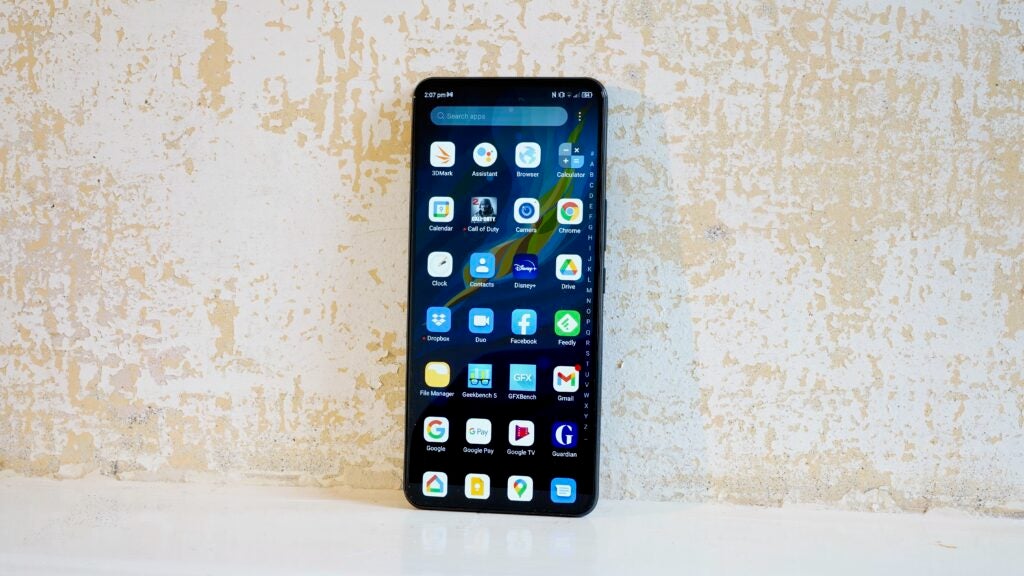
The practical outcome of all this is that the ZTE Axon 30 5G effectively runs like a phone worth twice the money. Running games like CoD Mobile on ramped up graphical settings isn’t an issue, and the whole navigation experience is blissfully free of stutters.
On the software front you’re getting MyOS 11 on top of Android 11. Yes, it’s another custom UI from a Chinese manufacturer, but it turns out to be far from the most egregious example. You get the choice of gesture or virtual button controls during the initial set-up, and Google Feed is right there where it should be, next to the main home screen.
On the other hand, there’s a deeply ugly weather widget splashed on said home screen by default. You can remove this, of course, but it doesn’t make a great first impression.
Generally speaking, MyOS is fast and fluid, and free of both ads and needless secondary app stores, and indeed apps.
As ever with such custom UIs, there’s no indication as to how many software updates the ZTE Axon 30 5G will receive. This will always put such phones on the back foot against efforts from Google, Nokia and the like.
Battery Life
- 4200mAh battery worryingly small
- Underwhelming stamina
- Impressively rapid 65W charging
4200 mAh doesn’t sound like a particularly large battery by modern standards, particularly in a phone with such a large and fluid display. While the ZTE Axon 30 will generally get you through a day of normal usage, it’s far from a star performer.
In 18 hours of fairly moderate usage, I found that the ZTE Axon 30 would drop to around 30%. Not a disaster by any means, but neither is that a massively impressive figure.
The classic Trusted Reviews battery test is to run the 3D Mark Wild Life Stress test repeatedly for a solid hour, and see what’s left in the tank. It’s a good way to see how a device’s battery stands up to more intensive tasks like gaming.
The ZTE Axon 30 lost 32%, which is significantly worse than the score we got for the OnePlus Nord 2 (10%) and the Sony Xperia 10 III (8%).
I then ran the PC Mark Work 3.0 battery test, which models more intensive real world usage through a successive loop of varied tasks such as web browsing, photo editing, and writing. The ZTE Axon 30 5G scored 6 hours 40 minutes, whereas most mid-range phones, including the likes of the OnePlus Nord 2 and the Xiaomi 11T, will comfortably pass the 10 hour mark.
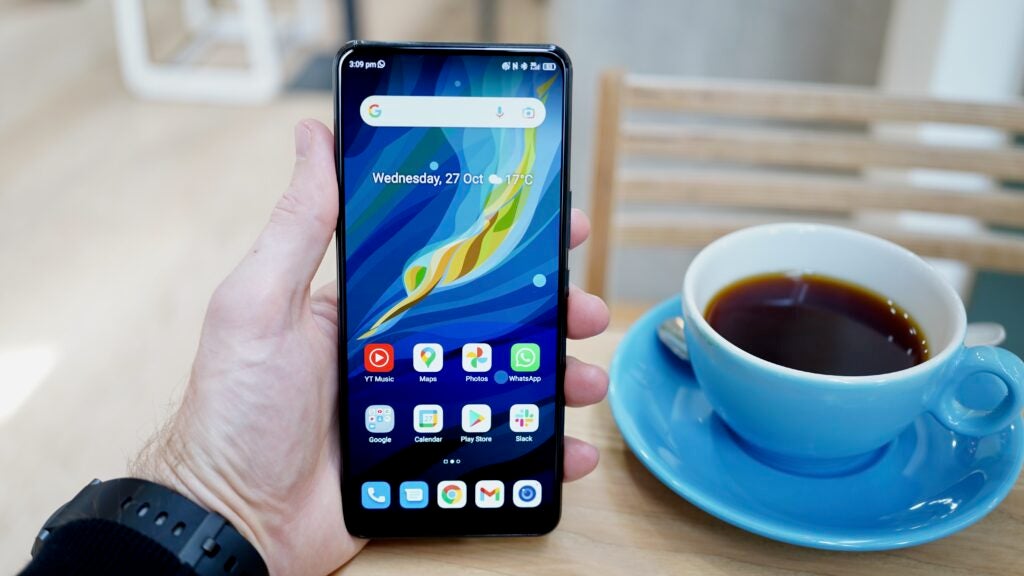
While the ZTE Axon 30 5G’s battery life isn’t too impressive, its charging speeds are very good indeed. It comes with a 65W charger, which is enough to get this slightly small cell from 0 to 50% in 11 minutes, and to 100% in 40 minutes.
Latest deals
Should you buy it?
You hate notches: ZTE has managed to effectively do away with the dreaded display notch. The ZTE Axon 30 5G’s display is also unusually big, bright, and vibrant for the money
You’re a power user who needs to get through a long day: The phone’s too-small battery and underwhelming stamina makes long, intensive days a bit of a no-no if you’re away from a charging point
Final Thoughts
The ZTE Axon 30 5G is a welcome addition to the competitive mid-range smartphone market. While it’s pretty ordinary in many respects, its 6.92-inch 120Hz OLED display really stands out from the crowd.
We can’t say we understand ZTE’s decision to focus on hiding the selfie camera so effectively behind that display, and we would have liked to have seen such a component married with more convincing specs elsewhere. But there’s no denying how tight the implementation of this technology is, even if it takes its toll on selfie quality.
There are better-rounded mid-range phones on the market, such as the OnePlus Nord 2 and the Xiaomi Mi 11. But the ZTE Axon 30 5G’s party trick undoubtedly earns it a place at the table as an affordable media playback specialist.
How we test
We test every mobile phone we review thoroughly. We use industry standard tests to compare features properly and we use the phone as our main device over the review period. We’ll always tell you what we find and we never, ever, accept money to review a product.
Used as our main handset during test period
Camera tested in variety of situations with all modes
Tested with synthetic benchmarks and real world use
FAQs
The Axon 30 is a 5G phone
Yes, there is a 65w charger in the box
This phone runs Android 11 with ZTE’s skin





